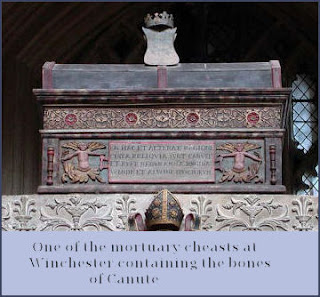Stephen II (Hungarian: II István; Croatian: Stjepan II; Slovak: Štefan II; 1101 – early 1131), King of Hungary and Croatia, ruled from 1116 until 1131. His father, King Coloman, had him crowned as a child, thus denying the crown to his uncle Álmos. In the first year of his reign, Venice occupied Dalmatia and Stephen never restored his rule in that province. His reign was characterised by frequent wars with neighbouring countries.
Stephen and his twin brother, Ladislaus, were sons of the Hungarian king Coloman by his wife, Felicia of Sicily.
According to the Illuminated Chronicle, they were born "... in the year of our Lord 1101." Stephen was named after the first king of Hungary, who had been canonised in 1083, implying that he was his father's heir from birth.
A document written in Zadar in approximately 1105 AD makes mention of "Stephen, our most renowned king" along with Coloman, proving that the latter had his four-year-old son crowned king.
Álmos and his son, Béla are blinded on Coloman's order (from the Illuminated Chronicle) Coloman had Álmos seized Coloman had the blind Álmos imprisoned before his death (from the Illuminated Chronicle) By the time of Stephen's coronation, Coloman had demonstrated his intention to secure the succession for his son. Coloman's ambitious brother, Álmos — who had already rebelled against the king in 1098 — opposed this plan and left Hungary. He first sought the assistance of Henry V, Holy Roman Emperor, followed by an appeal to Duke Boleslaw III of Poland.
When all of his efforts ended in failure, Álmos submitted to Coloman and returned to Hungary, although he made several abortive attempts to dethrone Coloman in the following decade. In order to bring an end to the menace these plots presented to Stephen's succession, Coloman had Álmos and Álmos's little son, Béla, blinded.
STPEHEN III
Stephen III (Hungarian: István, Croatian: Stjepan, Slovak: Štefan; summer of 1147 – 4 March 1172) was King of Hungary and Croatia between 1162 and 1172. He was crowned king in early June 1162, shortly after the death of his father, Géza II. However, his two uncles, Ladislaus and Stephen, who had joined the court of the Byzantine Empire, challenged his right to the crown. Only six weeks after his coronation, the Byzantine Emperor Manuel I Komnenos launched an expedition against Hungary, forcing the Hungarian lords to accept Ladislaus' rule.
Stephen sought refuge in Austria, but returned and seized Pressburg (now Bratislava in Slovakia). Ladislaus, who died on 14 January 1163, was succeeded by Stephen's younger uncle and namesake, Stephen IV, without resistance, but his rule was unpopular. The young Stephen defeated his uncle on 19 June 1163 and expelled him from Hungary.
Stephen IV attempted to regain his throne with Emperor Manuel I's support, but the latter made peace with Stephen III. He agreed to send his younger brother, Béla, to Constantinople and to allow the Byzantines to seize Béla's duchy, which included Croatia, Dalmatia and Sirmium. In an attempt to recapture these territories, Stephen III waged wars against the Byzantine Empire between 1164 and 1167, but could not defeat the Byzantines.
Historians attribute the creation of the "Székesfehérvár laws", the first example of extensive privileges granted to a town in the Kingdom of Hungary, to him. He concluded a concordat with the Holy See in 1169, renouncing the control of the appointment of the prelates. He died childless.
BELA III HUNGARY
Béla III (Hungarian: III. Béla, Croatian: Bela III, Slovak: Belo III; c. 1148 – 23 April 1196) was King of Hungary and Croatia between 1172 and 1196. He was the second son of King Géza II and Géza's wife, Euphrosyne of Kiev. Around 1161, Euphrosyne granted Béla a duchy, which included Croatia, central Dalmatia and possibly Sirmium. In accordance with a peace treaty between his elder brother, Stephen III, who succeeded their father in 1162, and the Byzantine Emperor Manuel I Komnenos, Béla moved to Constantinople in 1163.
 |
| Béla III |
He was renamed to Alexios, and the emperor granted him the newly created senior court title of despotes. He was betrothed to the Emperor's daughter, Maria. Béla's patrimony caused armed conflicts between the Byzantine Empire and the Kingdom of Hungary between 1164 and 1167, because Stephen III attempted to hinder the Byzantines from taking control of Croatia, Dalmatia and Sirmium. Béla-Alexios, who was designated as Emperor Manuel's heir in 1165, took part in three Byzantine campaigns against Hungary. His betrothal to the emperor's daughter was dissolved after her brother, Alexios, was born in 1169. The emperor deprived Béla of his high title, granting him the inferior rank of kaisar.
Stephen III died on 4 March 1172, and Béla decided to return to Hungary. Before his departure, he pledged that he would never make war against the Byzantine Empire. Although the Hungarian prelates and lords unanimously proclaimed Béla king, Lucas, Archbishop of Esztergom opposed his coronation because of Béla's alleged simony. Finally, the Archbishop of Kalocsa crowned him king on 18 January 1173, with Pope Alexander III's approval.
 |
| Béla III/Stephen II |
Béla promoted the use of written records during his reign. Hungarian chronicles from the 14th century even state that he was responsible for the establishment of the Royal Chancery. The royal palace built in Esztergom during his reign was the first example of Gothic architecture in Central Europe. He was the wealthiest European monarch of his time, according to a list of his revenues, but the reliability of the list is questioned.












